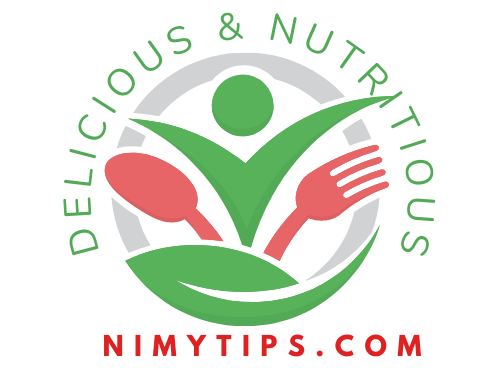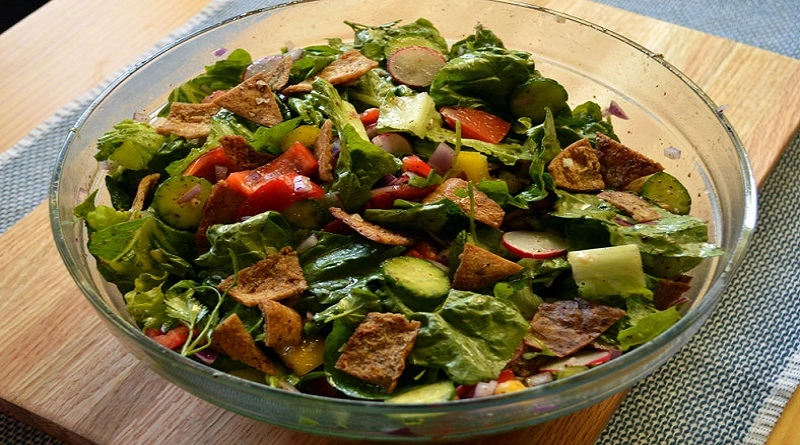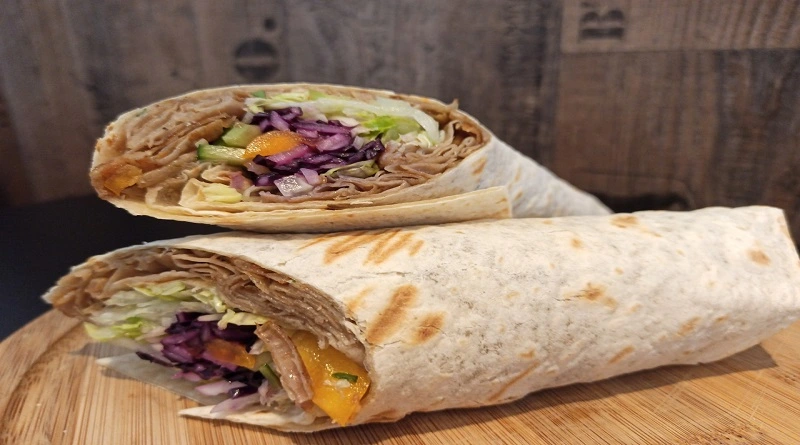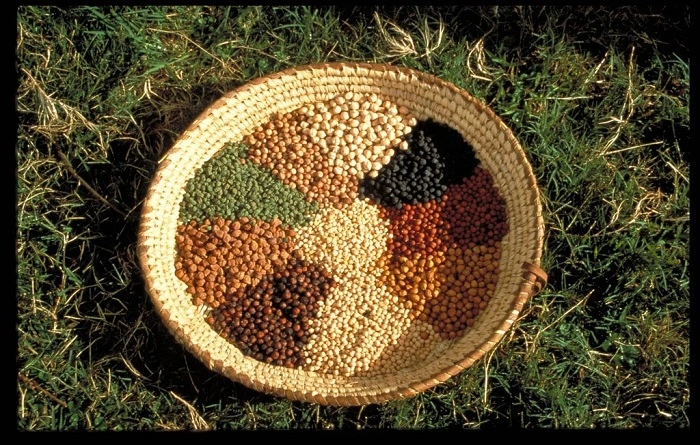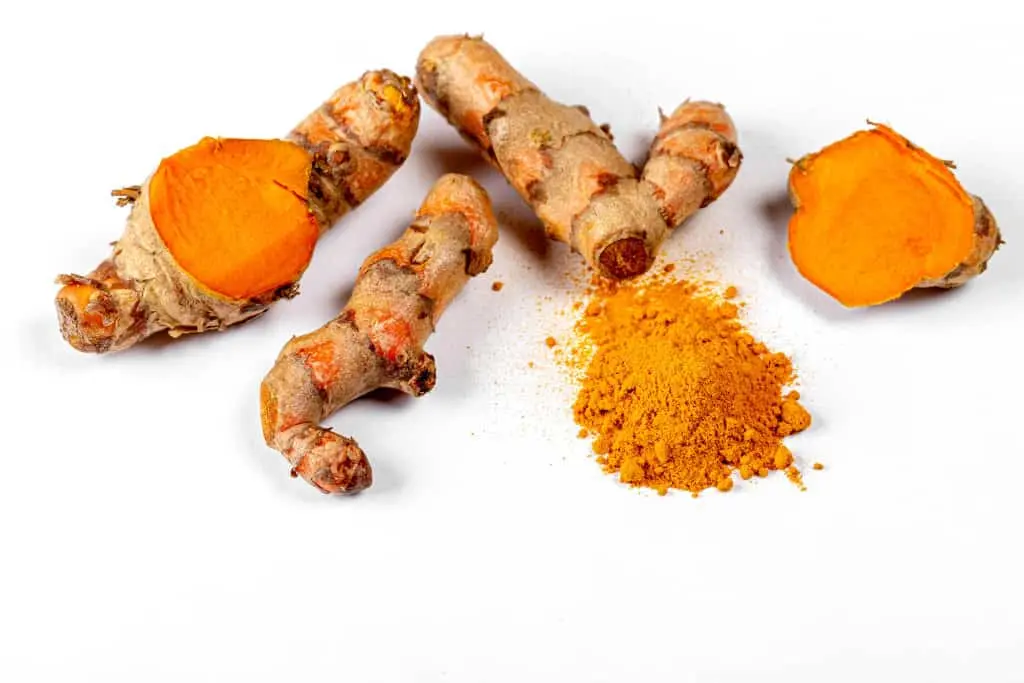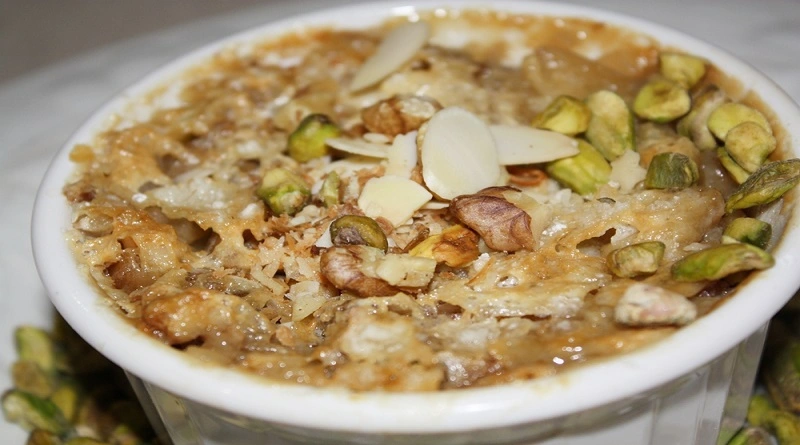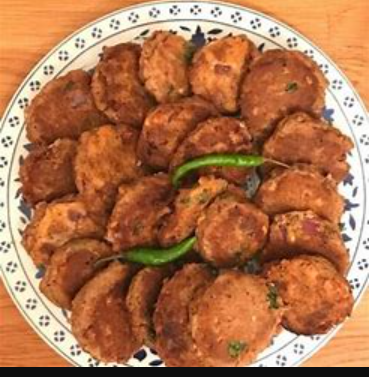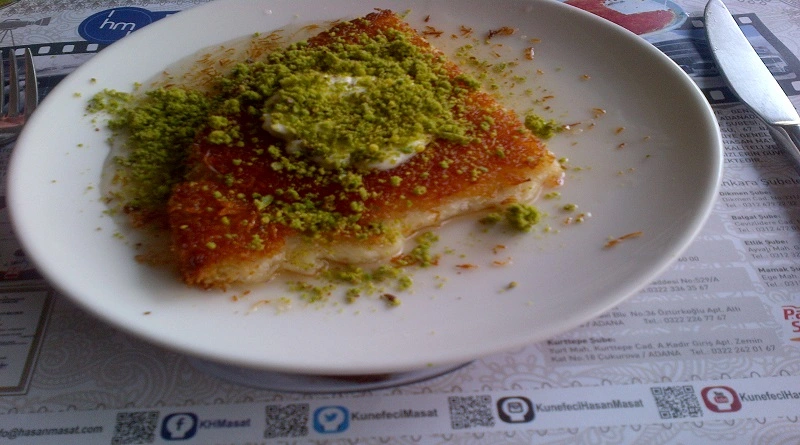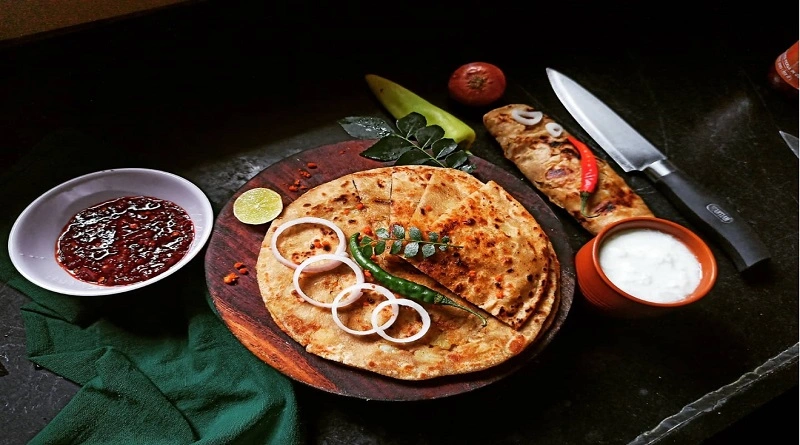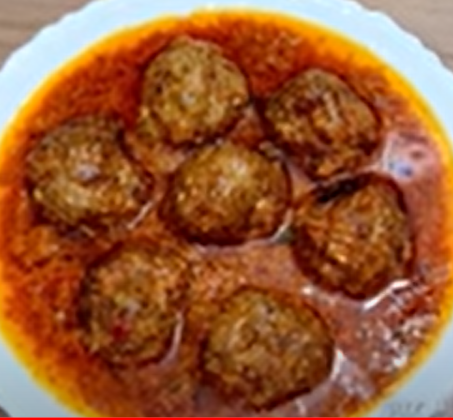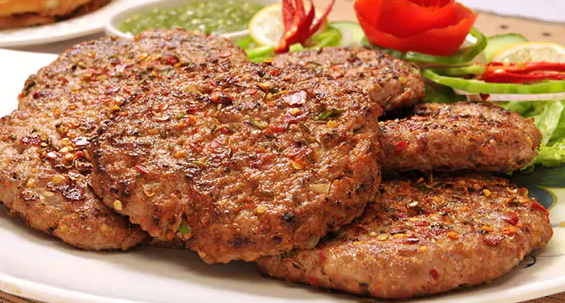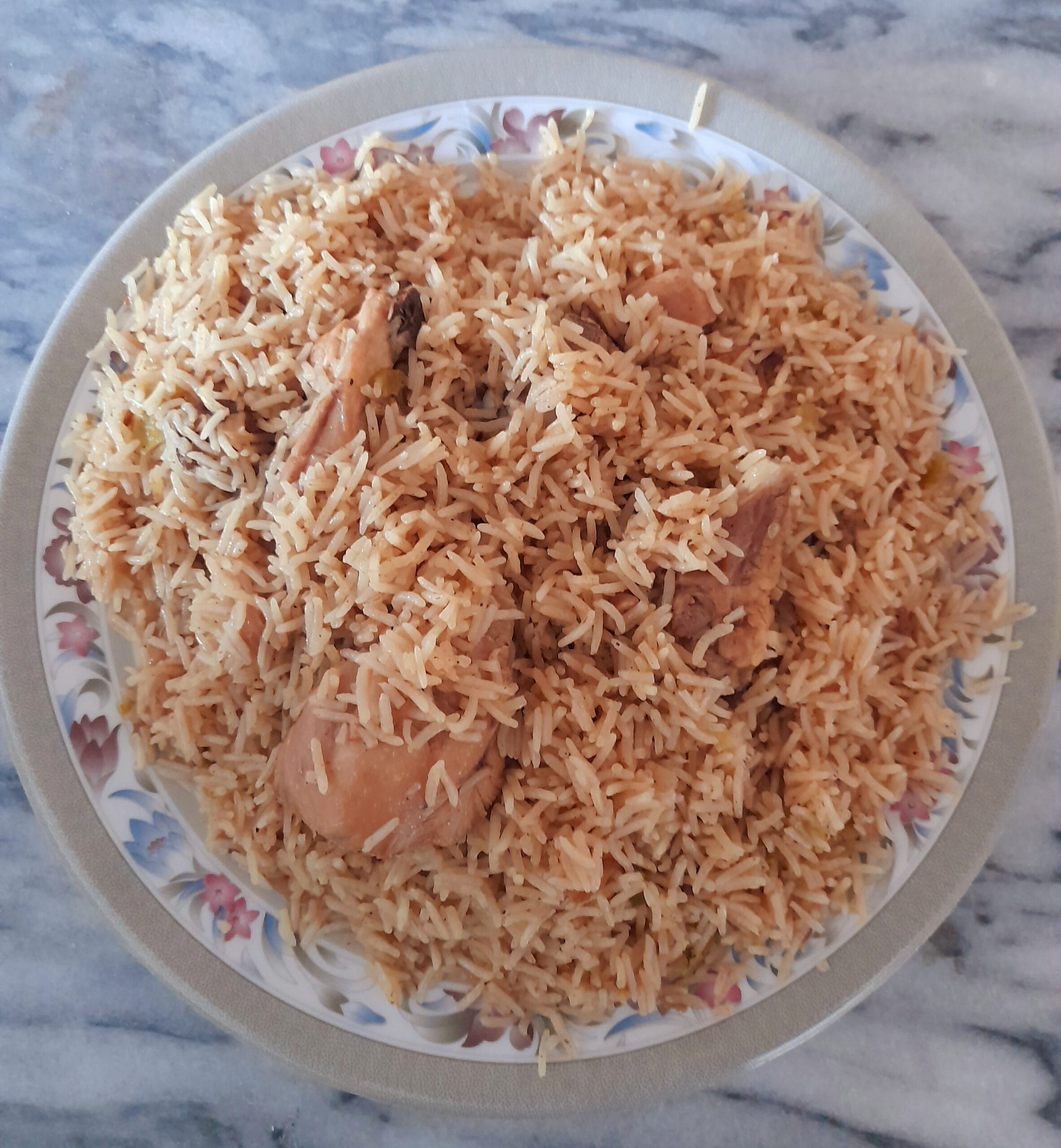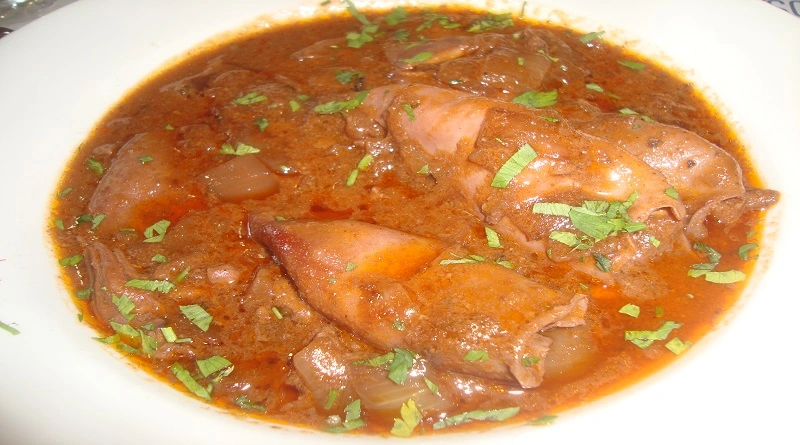Aloo Paratha is a delicious and culturally significant dish that has become an integral part of Indian as well as Pakistani cuisine and is enjoyed by people around the world.
Introduction
It originated in the Indian subcontinent, particularly in the Punjab region. The dish consists of unleavened dough stuffed with a mixture of mashed potatoes, spices, and sometimes, other vegetables or ingredients. The dough is then rolled out and cooked on a griddle or tawa, usually with ghee or oil.
It is often served as a breakfast or lunch dish and is a staple in many households. It is also a popular street food in India, and many vendors sell it on the streets or in small restaurants.
The dish has a long history and is believed to have originated during the Mughal Empire, which ruled India from the 16th to the 19th century. The Mughals were known for their love of food and culture, and their influence is evident in many Indian dishes, including Aloo Paratha.
Over time, Aloo Paratha has evolved and become a popular dish across India and in many other parts of the world, where it is often served in Indian restaurants. Its popularity can be attributed to its delicious taste, ease of preparation, and versatility. It can be eaten on its own or with a variety of accompaniments, such as pickles, yogurt, or chutney. It is among the most liked dishes like Nihari, Pakora, Biryani, etc
In addition to its cultural significance, Aloo Paratha has also gained recognition as a healthy and nutritious dish. Potatoes are a good source of carbohydrates and fiber, while the spices used in the stuffing provide a range of health benefits, including aiding digestion and boosting immunity.
Flourishing popularity of Aloo Paratha
According to a survey conducted by the Indian food delivery service, Swiggy, Aloo Paratha was the most ordered breakfast dish in India in 2020.
National Restaurant Association of India (NRAI), in one survey, ranked Aloo Paratha among the top popular street foods in India.
Aloo Paratha is not only popular in India but also in other parts of the world, including the United States, Canada, and the United Kingdom. It is often served in Indian restaurants and is a favorite among Indian food lovers.
The popularity of Aloo Paratha has led to the development of various regional and cultural variations of the dish. For example, in the state of Gujarat, a similar dish called “Aloo Methi Paratha” is made by adding fenugreek leaves to the potato stuffing.
In the state of Rajasthan, a similar dish called “Dal Paratha” is made by stuffing the paratha with a mixture of lentils and spices.
Aloo Paratha in Quotes
Here are some famous quotes regarding Aloo Paratha
- Aloo paratha, is the perfect comfort food that reminds me of home
- Soft, buttery aloo parathas, the ultimate indulgence
- Aloo paratha, the humble bread that steals hearts
- Golden brown and crispy on the outside, tender and flavorful on the inside, aloo paratha is a work of art
- Aloo paratha, the ultimate expression of love and comfort
- Aloo paratha, is the perfect blend of carbs and comfort
- Warm, hearty, and packed with flavor, aloo paratha is a true comfort food classic
- There’s nothing like a piping hot aloo paratha on a cold winter morning
Types of Aloo Paratha
Aloo Paratha is a versatile dish that can be customized and adapted to suit different preferences and tastes. Here are some of the different types of Aloo Paratha:
Plain Aloo Paratha
This is the basic version of Aloo Paratha, where the stuffing is made only with mashed potatoes and spices.
Aloo Methi Paratha
In this variation of Aloo Paratha, fenugreek leaves or methi are added to the potato stuffing to give it a slightly bitter flavor.
Aloo Paneer Paratha
This is a more indulgent version of Aloo Paratha, where crumbled paneer or Indian cottage cheese is added to the potato stuffing to make it richer and creamier.
Aloo Gobi Paratha
In this variation, cauliflower or gobi is added to the potato stuffing to make it more nutritious and flavorful.
Aloo Pyaz Paratha
This is a simple variation of Aloo Paratha where chopped onions or pyaz are added to the potato stuffing to give it a slightly sweet and tangy taste.
Aloo Mooli Paratha
In this variation of Aloo Paratha, grated radish or mooli is added to the potato stuffing to give it a refreshing and crunchy texture. However some times Paratha is made with a stuffing of grated Daikon Radish alone and called Mooli paratha which is also very much liked during the winter season in India and Pakistan.
Aloo Palak Paratha
In this variation, spinach or palak is added to the potato stuffing to give it a vibrant green color and a healthy boost of iron and other nutrients.
These are just a few examples of the many different types of Aloo Paratha that exist. Aloo Paratha is a versatile dish that can be customized and adapted to suit different preferences and tastes, making it a beloved and popular dish in both Indian as well as Pakistani cuisine.
The recipe of Paratha made with Chicken, Mutton, or Beef minced meat stuffing is separately detailed you may visit there for better understanding.
Nutritional facts of Aloo Paratha
Aloo Paratha consists of a flatbread made with wheat flour and stuffed with a spiced potato filling. Here are the nutritional facts for a single serving of Aloo Paratha (one paratha):
- Calories: 260-320
- Total fat: 9-14 grams
- Saturated fat: 2-4 grams
- Cholesterol: 0-10 milligrams
- Sodium: 300-400 milligrams
- Carbohydrates: 35-45 grams
- Fiber: 2-5 grams
- Sugar: 1-2 grams
- Protein: 5-7 grams
The nutritional content of Aloo Paratha varies depending on the recipe and the size of the paratha. Aloo Paratha is a relatively high-calorie dish, with a significant portion of its calories coming from carbohydrates and fat.
However, it is also a good source of fiber, which can help to promote satiety and regulate blood sugar levels. The potato filling in Aloo Paratha provides vitamins and minerals, including vitamin C, vitamin B6, and potassium. Overall, Aloo Paratha can be enjoyed as part of a balanced diet.
Health benefits of Aloo Paratha
Aloo Paratha is not necessarily a “health food,” but can offer some health benefits when consumed as part of a balanced diet. Here are some potential health benefits of Aloo Paratha:
Provides Energy
Aloo Paratha is a high-carbohydrate dish that provides the body with the energy it needs to function properly. The carbohydrates in Aloo Paratha are broken down into glucose, which is used by the body as fuel.
Good Source of Fiber
Aloo Paratha is a good source of dietary fiber, which can help to promote satiety and regulate blood sugar levels. The fiber in Aloo Paratha can also help to promote digestive health by keeping the digestive system regular.
Contains Vitamins and Minerals
The potato filling in Aloo Paratha contains several vitamins and minerals, including vitamin C, vitamin B6, and potassium. These nutrients are essential for maintaining good health and supporting the proper functioning of the body.
Provides Protein
Aloo Paratha also contains some protein, which is essential for building and repairing tissues in the body. Protein is also important for maintaining muscle mass and supporting immune function.
Healthier Food
While Aloo Paratha is traditionally made with wheat flour and ghee (clarified butter), it can be made healthier by using whole wheat flour and cooking it in a healthier oil like olive oil. Adding other vegetables like spinach, fenugreek leaves or carrots to the potato filling can also increase the nutritional value of Aloo Paratha.
Overall, Aloo Paratha is not a “superfood” but it can be enjoyed as part of a balanced diet in moderation. It provides energy, fiber, vitamins, and minerals, and can be made healthier by using whole wheat flour and healthier oils.
Recipe of Aloo Paratha
Here we will discuss an easy and delicious recipe for trying at home.
Cooking Time Required
The cooking time for Aloo Paratha can vary depending on the recipe and cooking method. Typically, it takes about 30-40 minutes to prepare Aloo Paratha from start to finish. Here is a breakdown of the cooking time for each step:
- Preparing the dough: The dough for the paratha needs to be kneaded and rested for about 10-15 minutes.
- Preparing the potato filling: The potatoes need to be boiled and mashed with spices, which can take about 10-15 minutes. If you want to add some other vegetables like Cauliflower, Daikon Radish, or Spinach the time will increase accordingly.
- Stuffing and rolling the parathas: This step involves stuffing the potato filling into the rolled-out dough and rolling it out again. This can take about 5-10 minutes per paratha.
- Cooking the parathas: The parathas are cooked on a hot griddle or tawa until golden brown on both sides, which takes about 2-3 minutes per side.
Overall, it takes about 30-40 minutes to prepare 4-6 Aloo Parathas. However, this can vary depending on the recipe and the cook’s experience. With practice, one can become faster at rolling and cooking the parathas, reducing the overall cooking time.
Ingredients Needed
Here are the ingredients needed to make Aloo Paratha for a four-person serving:
For the dough:
- 2 cups whole wheat flour
- 1 tsp salt
- 1 tsp oil
- Water, as needed (about 250 ml)
For the potato filling:
- 4 medium-sized potatoes, boiled and mashed
- 1 small onion, finely chopped
- 1-2 green chilies, finely chopped (optional)
- 1 tsp cumin seeds
- 1 tsp coriander powder
- 1/2 tsp red chili powder (optional)
- Salt, to taste
- 1-2 tbsp fresh coriander leaves, finely chopped (optional)
In cooking the parathas:
- Oil or ghee (clarified butter) for cooking
Optional:
1/4 cup finely chopped spinach or fenugreek leaves or grated carrots to add to the potato filling for extra nutrition.
This recipe will make 4 Aloo Parathas, enough for a serving of four people.
Utensils Required
Here are the utensils required to make Aloo Paratha:
- Mixing bowl
- Rolling pin
- Griddle or tawa (flat skillet)
- Spatula
- Kitchen towel or paper towel
- Knife and cutting board (for chopping onion and coriander leaves)
- Potato masher or fork (for mashing boiled potatoes)
These are the basic utensils needed to make Aloo Paratha. However, you can also use a food processor or blender to make the dough and a potato ricer for mashing the potatoes. Additionally, if you prefer, you can use a non-stick pan or add more oil or ghee to ensure the parathas don’t stick to the griddle.
Steps in Making Aloo Parathas
Prepare the dough:
In a large mixing bowl, combine the whole wheat flour, salt, and one tablespoon of oil. Gradually add water and knead to form smooth and elastic dough. Cover and let the dough rest for 10-15 minutes.
Prepare the potato filling:
- Boil the potato in plain water up-to-hand mash able soft form, remove the water and let them cool to room temperature.
- Remove the skin of the potato and in a separate bowl, mash them thoroughly with hand or Mortar and Pestle (you may use any gadget for it).
- If you want to add vegetables you may boil the fairly cut (2-3 inches pieces) cauliflower separately and after cooling down mash it as previously done in the case of potato. You may use only cauliflower for stuffing instead of potato in Paratha. Similarly, Daikon Radish stuffing may be prepared by grating them. Remember radishes don’t need to be boiled they are just peeled and grated only. Just like cauliflower, you may use radish in combination with potato or alone for making radish paratha.
- Secondly, if you want to add some Lentils you have to soak in plain water split and skinned Grams, Green Gram, and Orange lentils in equal quantities i.e. (3 tablespoons (about 30 grams) each) for a minimum of 20 minutes. Then boil them in two cups of water on medium flame and stir them occasionally up to a dense solution. Then mix them with Mortar and Pestle. You may use any suitable electric mixer for a uniform dense filling. This lentil filling may be used with potato filling or alone to make lentil Paratha.
- Mix the mashed potatoes, chopped onion, green chilies, cumin seeds, coriander powder, red chili powder, salt, and fresh coriander leaves (if using). Mix well until all the spices are evenly distributed.
Roll out the dough and stuff it with potato filling:
- Divide the dough into four equal portions and roll each portion into a ball. Dust with flour and roll out each ball into a small circle. Place a spoonful (you may increase or decrease filling) of the potato filling in the center of the circle and fold the dough over to enclose the filling. Dust with flour and roll out into a larger circle.
Cook the parathas:
Heat a griddle or tawa over medium-high heat and spread some oil on it. Place the rolled-out paratha on the hot griddle and cook for about a minute or until bubbles form on the surface. Flip the paratha and spread a little oil or ghee on top. Flip again and spread a little oil or ghee on the other side. Press the edges of the paratha with a spatula to ensure even cooking. Cook until both sides are golden brown and crisp.
Serve hot: Serve the Aloo Parathas hot with some plain yogurt, pickle, or chutney.
Aloo Parathas are delicious and nutritious Indian flatbreads that can be enjoyed for breakfast, lunch, or dinner. They are a great way to use up leftover boiled potatoes and can be customized with different spices and fillings to suit your taste preferences.
Cooking Precautions
Here are some cooking precautions to keep in mind when making Aloo Paratha:
- Be careful while boiling the potatoes to ensure they are cooked but not overcooked. Overcooked potatoes can become too mushy and difficult to work with when making the filling.
- Ensure the potato filling is well-mixed with the spices and seasoning to ensure an even distribution of flavors.
- Roll out the dough evenly to prevent the parathas from being too thick or thin, which can affect the texture and taste.
- Ensure the griddle or tawa is hot enough before placing the paratha on it to prevent it from sticking or becoming soggy.
- Use a sufficient amount of oil or ghee to prevent the parathas from drying out or becoming too crispy.
- Keep a close eye on the parathas while cooking and adjust the heat as needed to prevent them from burning.
- Use a kitchen towel or paper towel to press down on the edges of the paratha while cooking to ensure even cooking.
By following these cooking precautions, you can make delicious and perfect Aloo Parathas every time.
Common Mistakes in Cooking
Here are some common mistakes that people make when cooking Aloo Paratha:
- Overcooking or undercooking the potatoes, can result in a filling that is either too mushy or too hard.
- Rolling the dough too thin or thick, can result in parathas that are either too crispy or too doughy.
- Not properly seasoning the potato filling, which can result in bland parathas.
- Adding too much or too little water to the dough, can result in parathas that are either too dry or too sticky.
- Not properly heating the griddle or tawa, can result in parathas that are either undercooked or overcooked.
- Not using enough oil or ghee when cooking the parathas, can result in parathas that are dry or lack flavor.
- Pressing down too hard on the parathas while cooking, can cause them to break or lose their shape.
By avoiding these common mistakes and following the right cooking techniques, you can make perfect Aloo Parathas that are delicious and flavorful every time.
Serving Instructions
Here are some serving instructions for Aloo Paratha:
- Serve hot: Aloo Paratha is best served hot off the griddle or tawa. Serve them immediately after cooking to enjoy their full flavor and texture.
- Pair with sides: Aloo Paratha is traditionally served with sides such as yogurt, pickle, chutney, or curry. You can also serve them with a salad or other accompaniments of your choice.
- Add a dollop of butter or ghee: For added richness and flavor, you can add a small dollop of butter or ghee on top of the paratha before serving.
- Cut into quarters: Cut the paratha into quarters before serving to make it easier to eat and share.
- Enjoy as a meal or snack: Aloo Paratha can be enjoyed as a meal or snack. They are perfect for breakfast, lunch, or dinner, or as a quick snack or appetizer.
By following these serving instructions, you can enjoy delicious and satisfying Aloo Parathas with your family and friends.
Side Effects of Aloo Paratha
While Aloo Paratha is a delicious and popular food item, consuming it excessively or without proper portion control can have some potential side effects. Here are a few things to keep in mind:
- High in calories: Aloo Paratha is a calorie-dense food, so consuming it in large amounts can lead to weight gain.
- High in carbohydrates: Aloo Paratha is also high in carbohydrates, so consuming it in excess can result in a spike in blood sugar levels, especially for those with diabetes.
- High in sodium: The salt used in the dough and potato filling can add to the overall sodium content of the dish, which can be harmful to individuals with high blood pressure or heart disease.
- Poor digestion: Eating too much Aloo Paratha can also lead to poor digestion, bloating, and stomach discomfort, especially for those with sensitive stomachs.
- Gluten intolerance: Aloo Paratha is typically made with wheat flour, so individuals with gluten intolerance or celiac disease should avoid consuming it.
While Aloo Paratha is a tasty and nutritious food item, it’s important to consume it in moderation and practice portion control to avoid potential side effects.
Conclusion
Aloo Paratha is a popular Indian flatbread that is made with a potato filling. It is a delicious and nutritious food item that can be enjoyed as a meal or snack. Aloo Paratha is easy to make at home and can be customized to suit your taste preferences. However, it’s important to consume it in moderation and practice portion control to avoid potential side effects.
Frequently Asked Questions
Is Aloo Paratha healthy?
Aloo Paratha can be a healthy food item when consumed in moderation and with proper portion control. It is a good source of carbohydrates, fiber, and protein. However, it can be high in calories, sodium, and carbohydrates, so it’s important to consume it in moderation.
Can Aloo Paratha be made gluten-free?
Yes, Aloo Paratha can be made gluten-free by using gluten-free flour or a combination of gluten-free flour such as rice flour, tapioca flour, and potato starch.
Can Aloo Paratha be frozen?
Yes, Aloo Paratha can be frozen for later use. Once cooked, let it cool to room temperature, wrap it in plastic wrap or aluminum foil, and store it in an airtight container in the freezer for up to 2-3 months.
What are some variations of Aloo Paratha?
There are many variations of Aloo Paratha, including adding spices such as cumin, coriander, and chili powder to the potato filling, adding paneer (Indian cottage cheese) to the filling, or adding herbs such as cilantro or mint to the dough.
Can Aloo Paratha be made vegan?
Yes, Aloo Paratha can be made vegan by using vegetable oil instead of ghee or butter in the dough and filling, and using a vegan yogurt or pickle as a side.
References
- “The Essential Indian Instant Pot Cookbook” by Archana Mundhe
- “Made in India: Recipes from an Indian Family Kitchen” by Meera Sodha
- https://en.wikipedia.org/wiki/Aloo_paratha
